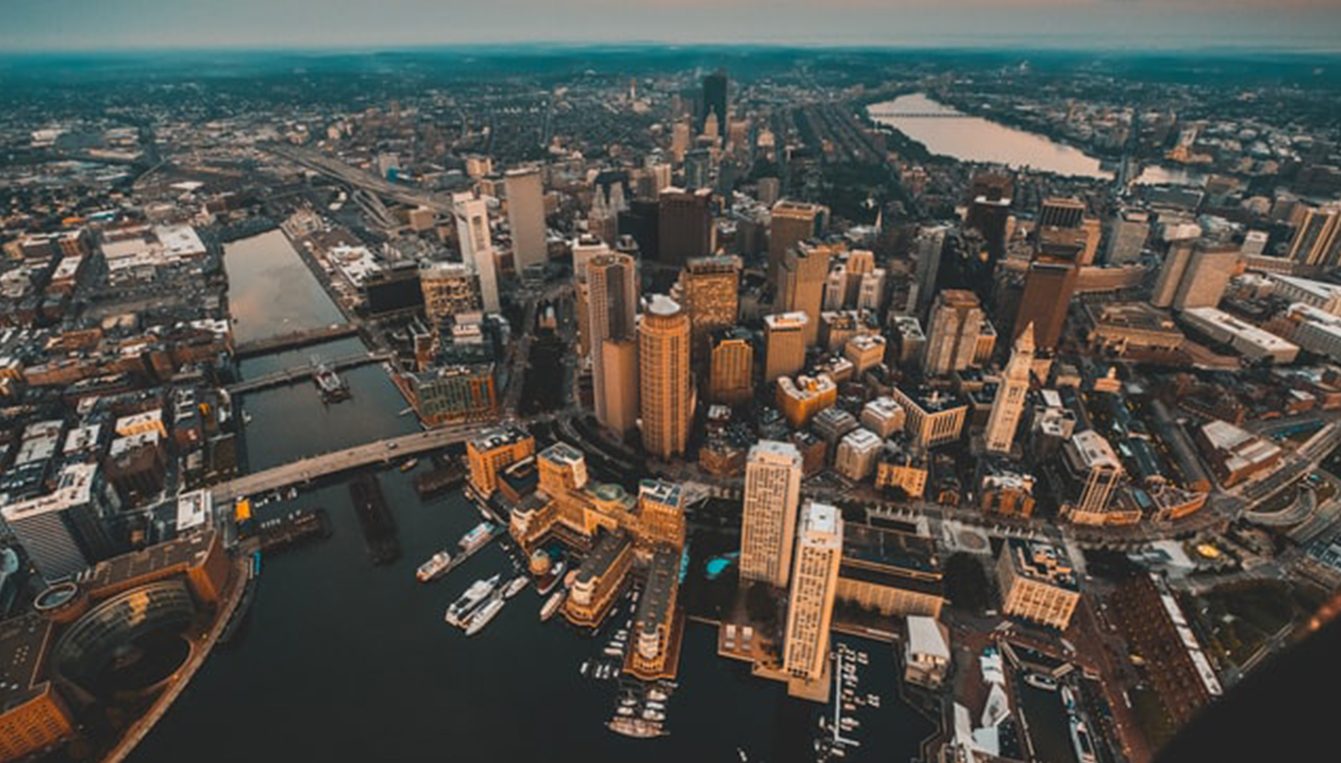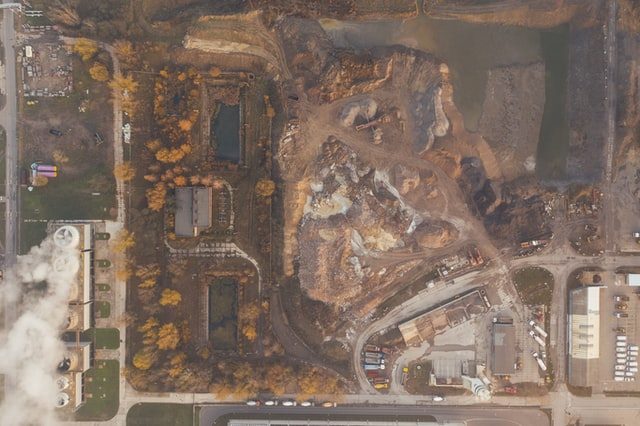Alex Odom
Data Centers | Market Leader
Associate Principal

On June 12, 2020, the city of Boston declared racism a public health crisis, but the markings of structural racism can be found in almost every public health crisis. In 2018, the EPA reported on environmental racism, finding that people of color are more likely to be harmed by air pollution. In our cities, the built environment shows the same inequities, where people of color have disproportionately less access to public transportation, healthy food options, and equitably resourced health care and school systems. Noise pollution has been labeled the new secondhand smoke, and the next big public health crisis, and like all public health crises, it has been shown to disproportionately affect nonwhite individuals.
While air pollutants have been called a “silent killer”, the effects of noise pollution have gone similarly unnoticed. While it is obvious that extreme noise can lead to hearing loss, lower level noises can also have significant health impacts. Noise disrupts sleep and has been shown to have negative cardiovascular and metabolic effects. In another edition of our blog, I wrote about how noise can also have negative impacts on language development and learning outcomes in children.
In 2017, researchers published a study on the inequities of noise exposure in the US, based on a review of a national “noise map”. They found that estimated nighttime and daytime noise levels were up to 4 dBA higher in areas with a higher population of nonwhite residents and people of lower socioeconomic status. Although the 2017 noise map was generated based on a limited sample of measurements and extrapolated using computer modeling methods, similar studies in Canada, Europe, and my home state of Minnesota have found evidence of similar inequities across race and socioeconomic status.
The variability in individual exposures are likely much greater than the 4 dBA estimated in the study. A parallel can be drawn to the urban heat island effect, in which cities experience significantly higher temperatures than their suburban surroundings, but within cities, there is even more nuance. There can be 15 to 20 degree Fahrenheit differences across areas within cities, with the hottest zones often found in poor, nonwhite neighborhoods with few trees. Similarly, noise levels can vary greatly across a neighborhood-based on nearby industry, traffic patterns, and construction. Wealthier individuals are also likely to be able to do more things to reduce or avoid noise, such as living in top floor apartments (to get away from traffic noise), adding interior secondary glazing at windows to reduce noise further, or even legal action.
Considerable work and public attention have been given to the environmental justice movement, and lessons learned from that movement can be helpful when developing strategies to combat inequities in noise exposure. The environmental justice movement was born from a social justice movement, but at times modern environmentalism seems to have forgotten its roots.
Often, environmentalism is focused on protecting the “great outdoors”, caring about untouched nature more than the human environments in our cities. This same tendency is evident when talking about noise pollution; my first blog at Acentech was about preserving our national parks’ quiet. People know and accept that cities are loud, and seek to escape from it, like the project One Square Inch of Silence. While preserving peace and quiet in nature is obviously important, our attention should be at least equally focused on reducing noise where people live, work, and learn.
In the US, there is no enforced federal noise regulation to protect citizens in their homes, outside of a few regulations for aircraft and federally funded construction (e.g., highways, housing projects). The US attempted to regulate noise with the Noise Control Act of 1972, which led to the release of a guidance document on noise levels in 1974. Unfortunately, in 1982 the responsibility was shifted to state and local governments, and, not surprisingly, each state and city treats noise differently. In some cases, local and state regulations are written in ways that can create inequities of noise exposure.
In Massachusetts, where Acentech is headquartered, our state noise code sets limits based on the existing ambient, which cannot be exceeded by 10 dBA when a new source is introduced. This rule was created to allow for some balance between maintaining quiet communities and allowing for economic development, but if equally applied, is inherently biased to protect quiet rural communities more than noisy urban communities. A rural community’s background sound level might be as low as 25 dBA, whereas, in Boston, the background level might be as high as 50 dBA. Allowing for an increase of 10 dBA in both areas does more to harm the urban resident, as the negative health effects of allowable sound levels at 60 dBA (50 dBA ambient + 10 dBA) are much more significant than sound levels at 35 dBA (25 dBA ambient + 10 dBA).

This is one reason why cities often have their own noise codes to protect their citizens from excessive levels of noise. Boston, like many cities, has a noise code that determines maximum allowable sound levels based on zoning. Different noise limits are applied for residential, business, and industrial zoned areas, as well as one special zoning class: residential in industrial. This is an example that can unintentionally lead to discriminatory zoning practices in land development since communities of color are more likely to be adjacent to industrial zones. In Boston, while normal residential zoned areas have a nighttime sound limit of 50 dBA, the city allows residential in industrially zoned areas to be louder, with a nighttime sound limit of 55 dBA.
Part of the challenge regarding noise regulations stems from the difficulties in communicating the complexity of acoustics to regulators and laypeople, in particular an understanding of the term decibel. Part of this could be solved by including the basics of acoustics in the education of young people, but another way would be simply to improve accessibility to relevant information.
Computer mapping can be used to help users visualize information about environmental hazards in spatial terms within a geographic model, as was used for air pollutants in Boston’s Chinatown neighborhood. The sound map of the levels in the US developed by the National Parks Service is graphically beautiful, but the fidelity of the map is insufficient to identify anything but the hot spot cities. You have to look closer at communities to get a more detailed picture. Here in Boston, Noise and the City, a community noise advocacy organization, is working to map Boston’s noise levels. Even though this is a worthy undertaking, Noise and the City is limited by the number of measurements they can obtain on their own.
In addition to collecting data, the professional acoustics community needs to do more to bring awareness of the dangers of excessive noise exposure. Here in the US, the Institute of Noise Control Engineering (INCE) has a Community Noise technical committee that promotes the use of noise control technologies and noise management policies to reduce noise exposure in communities across America. On a global scale, the International Commission on Biological Effects of Noise (ICBEN) promotes scientific research on the noise-induced effects on human beings. These are just a few of the professional organizations from around the world that joined together this year to declare 2020 the International Year of Sound. These organizations play an important role in highlighting how sound affects communities. They also have a significant challenge in making science more approachable for non-acousticians, policy-makers, and citizens alike.
Taking inspiration from Noise and the City, one way to increase people’s understanding of the noise levels they are exposed to is to empower them with the ability to measure sound levels themselves. Sound level meters aren’t widely available, but smartphones are a powerful tool with a built-in microphone that, when properly used and calibrated, are capable of measuring sound levels accurately. The National Institute for Occupational Safety and Health has developed a sound level meter app (limited to iOS devices) to help workers identify unsafe levels of noise in the workplace. Equipped with their own data and understanding of the sounds around them, citizens can help to identify racial and socioeconomic inequities in noise exposure, promote awareness of discriminatory zoning practices, and push regulators to provide equitable acoustic environments.
Smartphones as sound level meters can empower citizen scientists to understand the noise levels in their own environment, but currently, there isn’t a platform to collect and share this data to reveal meaningful trends. The development of such a platform would be an important tool to help acousticians and regulators experience the noise that citizens experience in their environments.